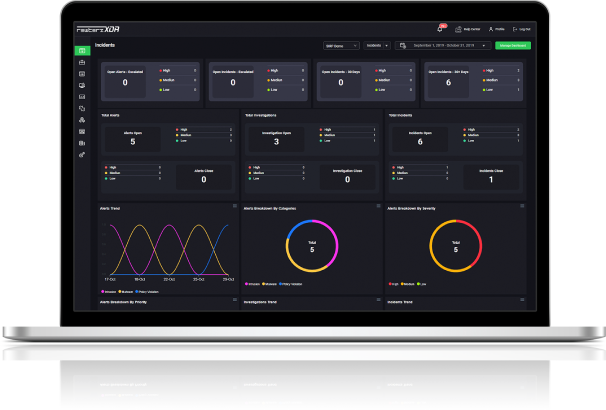

Hackers Exploiting IIS Servers to Deploy BadIIS Malware
February 9, 2025
Mirai Botnet aka Katana – Active IOCs
February 10, 2025
Hackers Exploiting IIS Servers to Deploy BadIIS Malware
February 9, 2025
Mirai Botnet aka Katana – Active IOCs
February 10, 2025Severity
High
Analysis Summary
Cobalt Strike first appeared in 2012 in response to alleged flaws in the Metasploit Framework, an existing red team (penetration testing) tool. Cobalt Strike 3.0 was released in 2015 as a stand-alone opponent emulation platform. However, researchers began observing threat actors using Cobalt Strike in 2016. Cobalt Strike's use in hostile activities was previously connected with huge cybercriminal operations like TA3546 and APT40. Two-thirds of detected Cobalt hit efforts from 2016 to 2018 were attributable to well-resourced cybercrime organizations or APT groups, according to researchers.
As a multi-function tool, Cobalt Strike enables attackers to infiltrate networks, gain unauthorized access, and perform various malicious activities. It provides a range of features, including command-and-control (C2) communication, post-exploitation modules, privilege escalation, lateral movement, and the ability to launch sophisticated social engineering campaigns. Its flexibility and comprehensive functionality make it a potent weapon in the hands of attackers.
Cobalt Strike often serves as a dropper or initial infection vector for advanced persistent threats (APTs) and other cybercriminal groups. Attackers commonly use phishing emails, exploit kits, or other means to deliver the malware to targeted systems. Once installed, Cobalt Strike allows the attackers to establish a C2 channel and remotely control the compromised machines, enabling them to execute further malicious activities, exfiltrate data, or deploy additional malware.
Cobalt Strike lets the attacker install a 'Beacon' agent on the target PC which provides the attacker with a plethora of capabilities, including command execution, file transfer, keylogging, mimikatz, port scanning, and privilege escalation. Cobalt Strike includes a toolkit called Artifact Kit that is used to create shellcode loaders.
Researchers discovered a new wave of phishing attacks in September that infected job seekers in the United States and New Zealand with Cobalt Strike beacons. The malware campaign used the lure of a job to infect victims with leaked versions of Cobalt Strike beacons. It was observed that Cobalt Strike is not the only piece of malware used in the attacks. In certain situations, individuals were instead infected with a different type of information-stealing malware known as RedLine or an Amadey botnet executor.
One of the key aspects that make Cobalt Strike a powerful tool is its ability to evade detection by traditional security solutions. It employs obfuscation techniques, encryption, and other evasion mechanisms to bypass antivirus and intrusion detection systems, making it challenging to detect and mitigate. Additionally, Cobalt Strike provides attackers with a user-friendly interface and a wide range of attack vectors, enabling them to customize their campaigns and launch sophisticated attacks with relative ease.
Given its malicious usage, organizations and individuals need to remain vigilant and implement robust security measures to protect against Cobalt Strike attacks. This includes deploying advanced threat detection and prevention solutions, conducting regular security assessments and penetration testing, educating users about phishing and social engineering techniques, and maintaining up-to-date security patches and software updates.
Impact
- Sensitive Data Theft
- Identity Theft
- Financial Loss
Indicators of Compromise
MD5
8ddce1afa9773a41b892d16c12e03ab5
d85cad0990b58c957d75e70e32a1bac8
3c66d5eb6f1f13e38f2245ff4a167e27
SHA-256
e67b902e9e801d47d390f1e9e467569c27873974420126876e50887907c5af67
28482c95eeb0279935cc0c59f30b00f4656c193c2c07dc3f74c5bc9b301d73a6
3c220b93f4fe03e48e788514be11404b20ef6587391e190ed615fdd11a29e340
SHA1
f7fc03282d8de532dfe742475da309de5a0d65d9
083007a02f8755ca62c7a4e7cb11e81134f8b5d4
d25e4ec517073b5c97ec701687124b62c12b15af
Remediation
- Block all threat indicators at your respective controls.
- Search for indicators of compromise (IOCs) in your environment utilizing your respective security controls.
- Emails from unknown senders should always be treated with caution. Never trust or open links and attachments received from unknown sources/senders.
- Maintain cyber hygiene by updating your anti-virus software and implementing a patch management lifecycle.
- Patch and upgrade any platforms and software timely and make it into a standard security policy. Prioritize patching known exploited vulnerabilities and zero-days.
- Enable antivirus and anti-malware software and update signature definitions on time. Using multi-layered protection is necessary to secure vulnerable assets.








